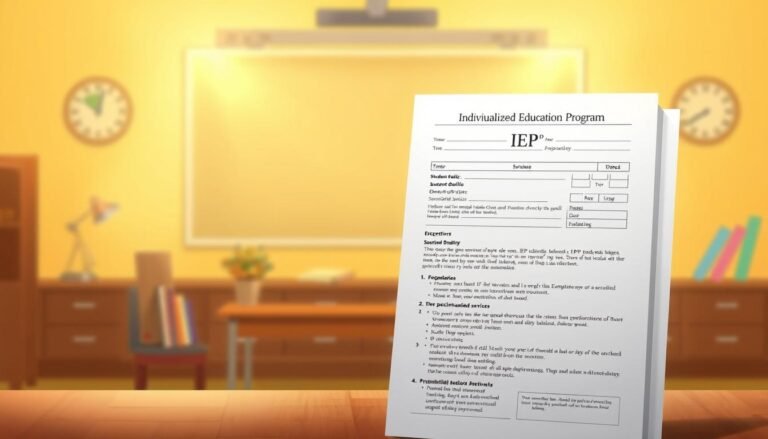
Navigating the System: Essential Tips for Effective Advocacy in Special Education
Introduction
In the complex landscape of special education, parents, educators, and advocates often find themselves in a dizzying maze of regulations, policies, and procedures. With the future of a child’s education on the line, it’s crucial to become a skilled navigator in this challenging system. Advocacy can feel overwhelming, yet it is more vital than ever. With the right tools and insights, navigating the system becomes not just a possibility but an opportunity for empowerment—both for parents and for the children they defend.
In your advocacy journey, understanding the nuances of special education can open doors to more tailored educational experiences. This article, titled Navigating the System: Essential Tips for Effective Advocacy in Special Education, will provide you with valuable strategies, real-world case studies, and answers to common questions to empower you in your advocacy efforts.
Understanding the Landscape of Special Education
Recognizing Your Child’s Rights
Understanding your child’s rights is the cornerstone of effective advocacy. Under the Individuals with Disabilities Education Act (IDEA), children with disabilities have the right to a Free Appropriate Public Education (FAPE). This means access to specialized services first and foremost.
Case Study: Jamie’s Journey
Jamie is a 10-year-old diagnosed with autism. When her parents discovered that she wasn’t receiving the resources she needed in her general education classroom, they began to explore her rights under IDEA. This led them to request an Individualized Education Program (IEP) meeting, where they were able to advocate for Jamie’s needs effectively.
Relevant Guidelines
- Know the Laws: Familiarize yourself with local, state, and federal laws such as IDEA and Section 504 of the Rehabilitation Act.
- Documentation: Keep meticulous records of communications, meetings, and educational assessments. This documentation serves as critical evidence in meetings with schools.
Building a Support Network
Creating a Strong Support System
Building a support network of advocates, educators, and community resources can significantly impact your advocacy efforts. Websites, local advocacy groups, and social media platforms can provide valuable insights and emotional support.
Case Study: The Power of Community
After struggling alone, a group of parents in a town began a support group aimed at sharing experiences and resources. They regularly collaborate with local educators to bridge the gap between home and school, which has resulted in a more collaborative environment for their children.
Tips for Building Your Network
- Engage with Local Advocacy Groups: Increase your knowledge and share experiences.
- Utilize Social Media: Platforms like Facebook and Twitter have groups dedicated to special education advocacy.
Understanding Individualized Education Plans (IEP)
The Importance of the IEP
Every child’s educational needs are unique, which is why the IEP is a critical tool for ensuring personalized education. An IEP details specific services and goals tailored to the child’s needs.
Key Components of a Comprehensive IEP
- Present Levels of Performance: Understand where your child stands academically and socially.
- Annual Goals: Set measurable objectives that the school will strive to achieve within the year.
- Special Services and Supports: Identify what supplementary services are required for your child to meet their goals.
Analyzing Jamie’s IEP
In Jamie’s case, her IEP outlined specific social skills training and one-on-one support, which directly addressed her challenges in the classroom setting. This clarity allowed her parents and educators to work in tandem toward measurable goals.
Effective Communication Strategies
Mastering the Art of Communication
Communication is a two-way street. Advocating effectively means not only expressing your concerns but also understanding the perspectives of educators and administrators.
Techniques for Effective Communication
- Active Listening: Make sure to listen to educators’ insights and suggestions.
- Assertive Communication: Be clear, concise, and confident in expressing your needs without being confrontational.
Tools for Success
Using tools such as emails, formal letters, or even advocacy folders can organize communications with school staff, ensuring that your concerns are articulated effectively.
Conflict Resolution Strategies
Navigating Disagreements
Sometimes, disagreements may arise regarding your child’s needs. It’s vital to approach these instances with a clear strategy.
Case Study: Resolving Conflict
When Jamie’s school proposed a different type of service that her parents didn’t favor, they utilized mediation—a process that led to a productive discussion and a compromise that met everyone’s needs.
Effective Conflict Resolution Techniques
- Stay Calm: Emotions can run high; keeping a level head is crucial.
- Prepare for Meetings: Come armed with data, documentation, and a clear outline of your objectives.
Collaborating with Educators
Building Positive Relationships
Creating collaborative partnerships with teachers and school administrators can lead to better outcomes for your child.
Strategies for Collaboration
- Be Involved: Participate in school events and meetings.
- Share Resources: Provide helpful information that can ease service provision and improve understanding.
Utilizing Assessment and Data
The Role of Data in Advocacy
Regular assessments and data collection can help substantiate your advocacy efforts. Understanding both formative and summative assessments will provide you with insights on your child’s progress.
Importance of Data in Jamie’s Case
For Jamie, data collected from regular assessments helped demonstrate her progress (or lack of) in meeting IEP goals. This evidence was crucial in subsequent IEP meetings.
Keeping A Positive Attitude
The Power of Positivity
Advocacy can be draining, and challenges are inevitable. Maintaining a positive outlook can lead to better communication and interactions with school staff.
Tips for Staying Positive
- Celebrate Small Wins: Recognize improvements, no matter how minor.
- Stay Informed: Knowledge can empower you and help reduce anxiety.
Conclusion
Navigating the system of special education doesn’t have to be daunting. By equipping yourself with the right knowledge, building a support network, and mastering effective communication strategies, you can become a powerful advocate for your child. Remember, your involvement can shape not just your child’s educational journey but also influence the wider community’s approach to special education.
Use the tips outlined in this article to fuel your advocacy efforts. The world of special education can indeed appear complex, but with the right strategies at your fingertips, you can navigate this system with confidence. Together, let’s work towards a future where every child receives the education and support they deserve.
FAQs
1. What is the difference between an IEP and a 504 Plan?
An IEP is specifically designed for children who qualify for special education services under IDEA, while a 504 Plan outlines accommodations for students with disabilities to ensure they have equal access to education.
2. How often should I meet to review my child’s IEP?
The law requires IEP meetings at least once a year, but you can request additional meetings if you notice changes in your child’s needs or performance.
3. What should I do if I disagree with the school’s evaluation of my child?
You have the right to request an independent educational evaluation (IEE) at the school’s expense if you disagree with their evaluation.
4. Can I take legal action if my child’s educational rights are violated?
Yes, if you believe your child’s rights under special education laws are being violated, you can pursue legal options. Consulting with a special education attorney is recommended.
5. How do I prepare for an IEP meeting?
Gather documentation of your child’s progress, write down your concerns and preferred outcomes, and consider inviting other team members who can support your viewpoint.
Remember, you are not alone on this journey. Empower yourself with knowledge, and take the first steps toward becoming an effective advocate for your child within the educational system.
















